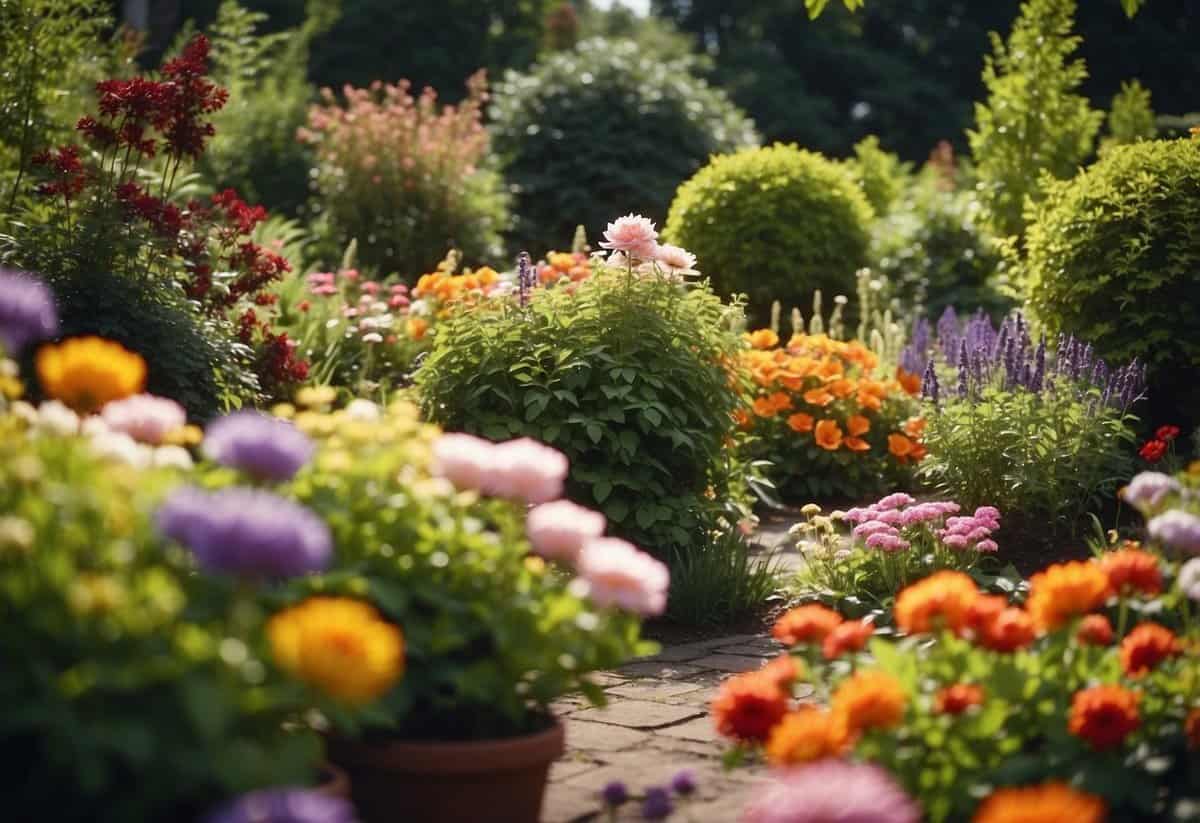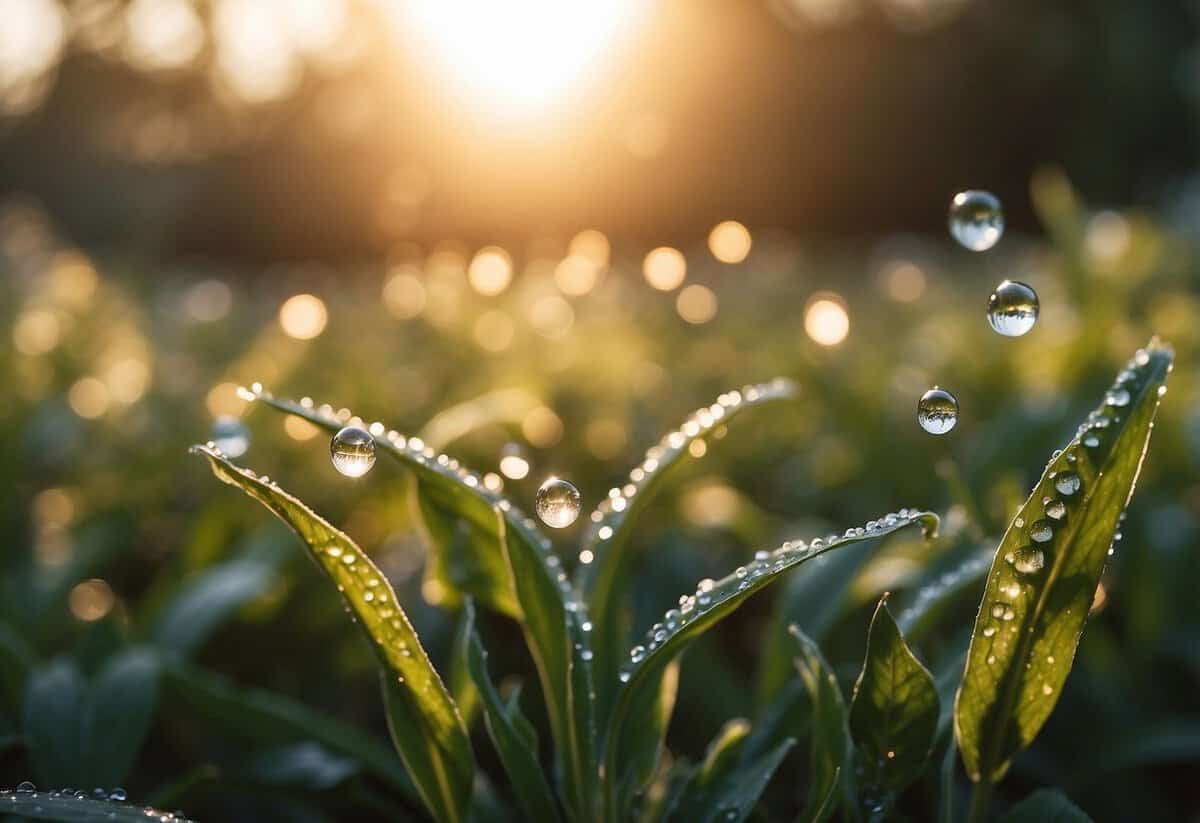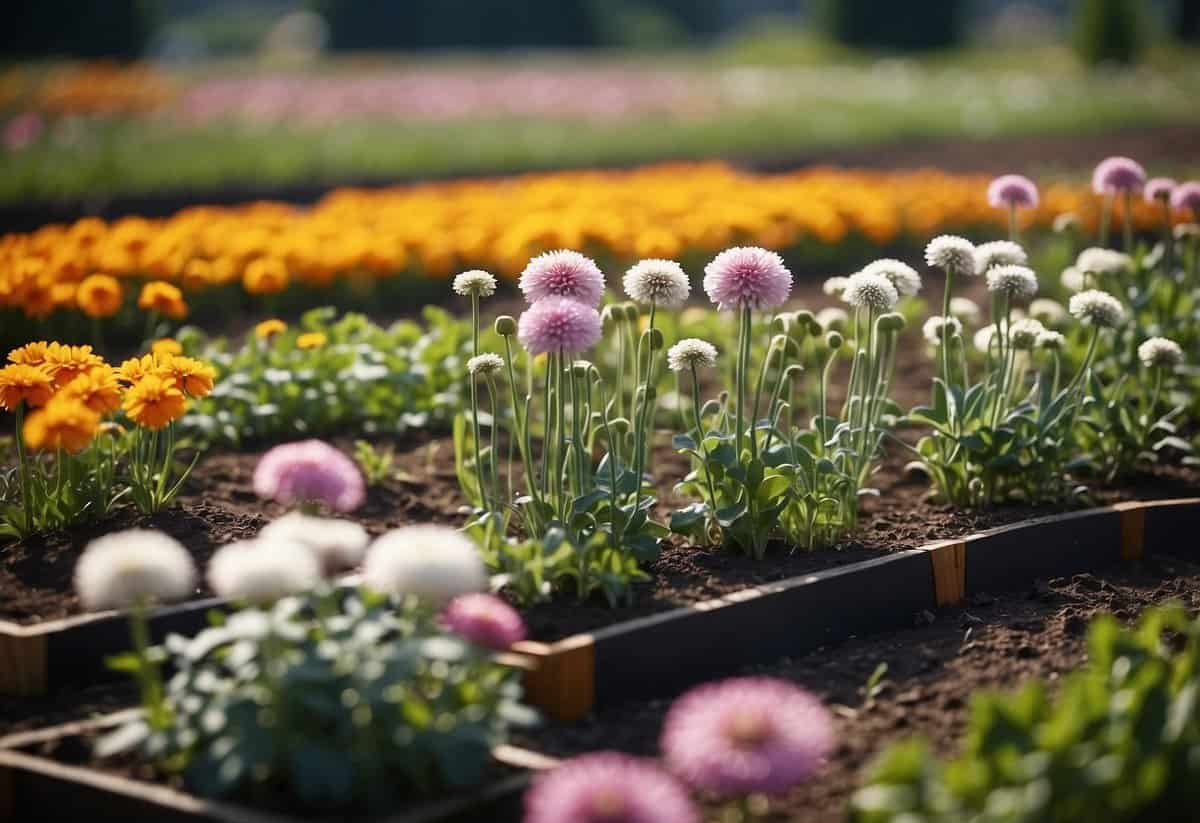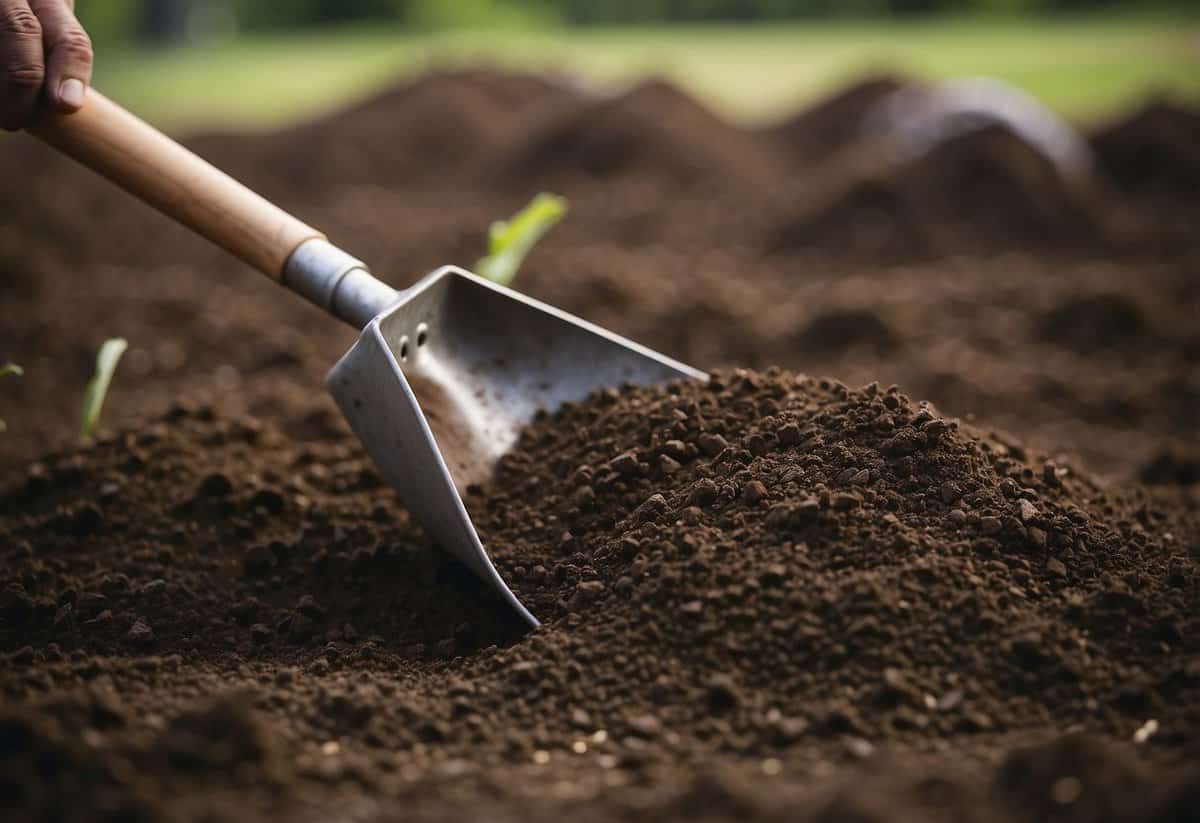Flower Garden Tips and Tricks: Grow a Stunning Blooming Oasis
Flower gardening is a delightful hobby that brings vibrant colors and life to your outdoor space. As a beginner, you might feel overwhelmed, but with the right tips and tricks, you can create and maintain a stunning flower garden.

What are the best practices for a thriving flower garden? With a little guidance, selecting the perfect spot, choosing compatible flowers, and understanding basic care techniques can transform your garden into a blooming paradise. Your journey to a beautiful garden starts with a few essential steps.
1) Choose Native Plants

Native plants are perfect for your flower garden. They are adapted to the local climate and soil, making them easy to care for and water-efficient.
Selecting native plants helps local wildlife. Birds, bees, and butterflies will visit more often, adding life to your garden.
Group plants with similar sunlight and water needs together. This creates a balanced and thriving garden space.
Learn more on selecting native plants at California Native Plant Society.
2) Use Mulch Generously

Mulching helps keep weeds at bay by blocking sunlight from reaching the soil surface. This prevents weed seeds from sprouting and growing.
Organic mulch like wood chips or straw adds nutrients to the soil as it breaks down. This helps your flowers grow better.
A layer of mulch also helps retain moisture in the soil, reducing the need for frequent watering. Your garden will stay hydrated even during hot summer days.
Adding mulch also protects soil from erosion and temperature extremes. This creates a more stable environment for your flowers.
3) Water Early in the Morning

Watering early in the morning is ideal for keeping your flowers healthy. Morning temperatures are cooler, which helps plants absorb water more effectively.
When you water in the early morning, around 5:00 to 9:00 am, plant foliage dries quickly. This quick drying helps prevent fungal diseases.
Avoid watering at night because it can cause fungal growth due to prolonged moisture on the leaves.
4) Prune Regularly

Pruning is key for a healthy and beautiful flower garden. By removing dead or overgrown branches, you will encourage new growth and more blooms.
Always use sharp tools to make clean cuts. This helps the plant heal faster and prevents disease.
Remember, different plants have different pruning needs. Some are best pruned in winter, while others right after they flower.
Regular pruning helps keep your plants in shape and promotes a tidy garden. For more detailed tips, you can check out these pruning techniques for beginners.
5) Attract Pollinators

You can bring more pollinators to your garden by planting the right flowers. Bees love yellow flowers, while butterflies prefer small blooms. Hummingbirds are drawn to tubular flowers.
Planting flowers in clusters makes it easier for pollinators to find and enjoy them. Lavender is especially great for attracting bees and also helps repel unwanted bugs like mosquitoes.
Consider adding yarrow to your garden. Its colorful blooms attract many types of pollinators, including bees and wasps. Yarrow is hardy in a variety of climates and adds a lovely touch to your garden.
6) Rotate Crops Annually

Rotating crops annually in your flower garden can help keep the soil healthy. This means changing the types of flowers you plant in a particular spot each year. It’s important because it can prevent pests and diseases from building up in the soil.
By rotating flowers, you can also improve soil fertility. Different plants have different nutrient needs and also give back different nutrients. So, rotating them ensures a balanced and nutrient-rich soil.
This practice is simple yet effective. It helps your flowers grow stronger and more vibrant each season. Give it a try to maintain a thriving garden!
7) Test Your Soil
Testing your soil is a key step for a thriving flower garden. By knowing your soil’s pH and nutrient levels, you can make necessary adjustments.
Use a shovel or trowel to dig about four inches deep in several spots. Mix these samples in a bucket, removing rocks and roots.
Perform a pH test using vinegar and baking soda. This will help you determine if your soil is acidic, neutral, or alkaline.
8) Compost Organic Matter

Composting is a great way to recycle kitchen scraps and yard waste into nutrient-rich soil for your flower garden. Use items like vegetable peels, fruit scraps, and coffee grounds.
Maintain a balance by mixing “browns” like fallen leaves with “greens” like grass clippings. Turn the compost pile every few weeks to keep it aerated.
Once the compost turns dark and crumbly, add it to your garden soil. This will boost nutrients and help your flowers grow beautifully. For more tips, visit this guide on composting.
9) Utilize Companion Planting

Companion planting can boost the health of your flower garden. By planting certain flowers together, you can help them grow better and keep pests away.
Marigolds, for example, are great companions for many flowers. They can repel harmful insects, keeping your garden healthy.
Planting tall flowers like sunflowers can give shade to smaller plants, protecting them from harsh sun. Pair these wisely for the best results.
For more tips, check out this companion planting guide. Your garden will thank you!
10) Deadhead Flowers Frequently

Deadheading flowers helps your garden look neat and encourages more blooms. This process is simple and quick.
Pinch off the old flower heads with your fingers or use garden pruners for tougher stems. Timing matters, so start deadheading as soon as the flowers fade.
For plants like cosmos and geraniums, regular deadheading keeps them flowering all summer. Trim at the nearest leaf node for best results.
For more tips, visit Treehugger.
Planning Your Flower Garden

When planning your flower garden, you need to consider the best location and choose flowers suited to your climate. This ensures a healthy, beautiful garden that thrives.
Choosing the Right Location
Picking the perfect location for your flower garden is crucial for success. First, look at how much sunlight the area gets. Most flowers need at least six hours of direct sunlight daily. Make sure your garden spot receives enough light to keep your plants healthy.
Next, check the drainage. Proper drainage prevents water from pooling around your plants, which could lead to root rot. To test this, dig a small hole and fill it with water. If the water drains in a few hours, your spot has good drainage.
Consider the soil quality too. Healthy soil is rich in nutrients and has good texture. You might need to add compost or other organic materials to improve it. A soil test can help you understand what amendments are needed.
Selecting Appropriate Flowers for Your Climate
Choosing flowers that thrive in your specific climate zone ensures your garden flourishes. Start by knowing your USDA hardiness zone. This helps you pick plants that can survive your area’s winter temperatures.
Look for native plants and those that are adapted to your region. These are better suited to your local soil, weather, and pests. They generally require less maintenance and water, which is a bonus for beginners.
Also, consider the seasonal aspects. Some flowers bloom in spring, while others may flourish in summer or fall. Mixing plants with different blooming times can give your garden color throughout the growing season. For warmer climates, aim for drought-resistant plants, while colder areas need hardy perennials.
To sum up, plan your flower garden meticulously to ensure your flowers thrive with minimal effort.
Soil Preparation and Fertilization

Getting your soil ready for planting and choosing the right fertilizers is key to a healthy flower garden. Testing your soil helps you know what nutrients it needs, and choosing between organic and synthetic fertilizers will depend on your gardening goals.
Soil Testing and Amendments
Before planting, it’s crucial to test your soil to understand its composition and nutrient levels. You can buy a soil test kit or send a sample to a local extension service. The test will tell you the pH level and show if your soil lacks essential nutrients like nitrogen, phosphorus, or potassium.
Once you know your soil’s needs, you can add amendments. Compost and aged manure are excellent for improving soil structure and adding nutrients. If your soil is too acidic or alkaline, you can adjust the pH by adding lime (to raise pH) or sulfur (to lower it) as needed.
Regularly amending your soil keeps it fertile and healthy, ensuring your flowers have the perfect environment to grow.
Organic vs. Synthetic Fertilizers
When it comes to fertilizing your garden, you have two main options: organic and synthetic fertilizers. Organic fertilizers like compost and manure release nutrients slowly, improve soil health, and are environmentally friendly. They promote healthy root development and increase the soil’s water retention capacity.
Synthetic fertilizers, on the other hand, provide a quick nutrient boost. They are easy to apply and come in specific formulations tailored to different plants’ needs. However, they can sometimes lead to nutrient runoff and may not improve soil structure over time.
Choosing between organic and synthetic fertilizers depends on your garden’s needs and your personal preferences. If you want a natural approach with long-term benefits, go for organic. If you need quick results and specific nutrient control, synthetic might be the way to go.







